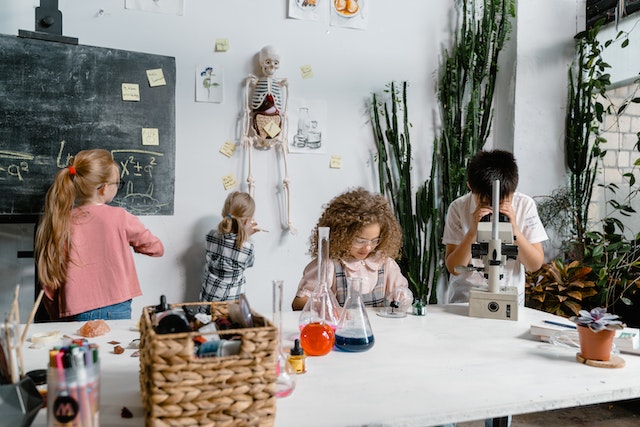Strategies for Boosting Creativity in Kids
Read the detailed description of Quest's Program Details!
As summer approaches and we are planning out our Innovators and Inventors Week in particular I am focused on creativity. Creativity has been on my mind since it is often considered a “super power” for children with ADHD as they often have unique gifts that fit with creativity including being spontaneous, risk takers who engage in out of the box thinking.
Creative endeavors are fun for me at camp since these types of challenges provide opportunities to stretch our kids to work well with others, be flexible and be willing to make mistakes. I was further inspired this week by meeting with Tracey Hill and some of her dedicated staff at the Child Creativity Lab as they specialize in fostering creativity through STEM.
Here are some potential tips and aspects of creativity to consider when crafting opportunities for your child. These tips are from researcher, Mitch Resnick, director of the Lifelong Kindergarten Group at MIT who helped develop Scratch, the largest coding program for children and also works with LEGO.
Resnick states that the “key challenge is not how to ‘teach’ creativity to children, but rather how to create a fertile environment in which their creativity will take root, grow, and flourish.” [1]. Resnick discusses the Creative Learning Spiral, a process that “encourages children to imagine what they want to do, create projects through playing with tools and materials, share ideas and creations with others, and reflect on their experiences.” [2]
For the stage of imagining, Resnick cites the importance of showing children images and examples to inspire what is possible, but then to encourage “messing around” with materials and sharing materials with others to spark ideas.
For the creation stage, Resnick discusses the importance of providing a wealth of varied materials and how you can celebrate the value for the design process across many different types of children’s interests.
For the playing stage, he discusses how it can be critical to provide longer periods of time to create and play to foster creativity. Resnick also discusses the importance of focusing on process versus outcome. Resnick states, “As children work on projects, highlight the process, not just the final product. Ask children about their strategies and their sources of inspiration. Encourage experimentation by honoring failed experiments as much as successful ones. Allocate times for children to share the intermediate stages of their projects and discuss what they plan to do next and why.” [3] I find that this concept of process versus outcome can be critical since there is great research for this type of approach not just for helping with creativity, but supporting people in reaching goals and having positive mental health outcomes.
For sharing ideas, Resnick discusses the importance for a parent or teacher to be a “matchmaker” to link children to work together and collaborate. He also discusses the healthy balance of adults collaborating with children in which adults are involved and helping, but do not overtake the creative process. I find that these areas are crucial for children and can at times look a little different for children with attention, learning and social difficulties as the ways you support may look a little different. We continue to see children thrive in group challenges and activities when there is structure, support, encouragement and skill building in areas such as how to use emotion regulation and communication tools.
For reflection, Resnick discusses the importance of asking children authentic questions and having adults share their own reflections as a way to discuss their thinking process and also demonstrate that thinking is “hard work.” For me, a key to creating opportunities for reflection for children is to build in the time for this, fostering a sense of curiosity about the process and a celebration of effort and for being a lifelong learner.
Similarly, Ed Catmull of Pixar discussed how much of Pixar’s success in the business world has come from some of these same principals such as taking risks, having a supportive peer culture, overcoming inhibitions to share ideas in process, creating a safe space for everyone to share and having “postmordems” after a project as a way to reflect. [4]
I hope that these tips from Resnick and Catmull are helpful to you as you think of ways to foster creativity as they are experts in the field. I encourage you to go play, create and reflect!
[1-3] Resnick, M., 10 tips for cultivating creativity in kids, March 21, 2020, Ideas.Ted.com, https://ideas.ted.com/10-tips-for-cultivating-creativity-in-your-kids/
[4] Catmull, E., How Pixar fosters collective creativity, Harvard Business Review, September 2008
https://hbr.org/2008/09/how-pixar-fosters-collective-creativity

